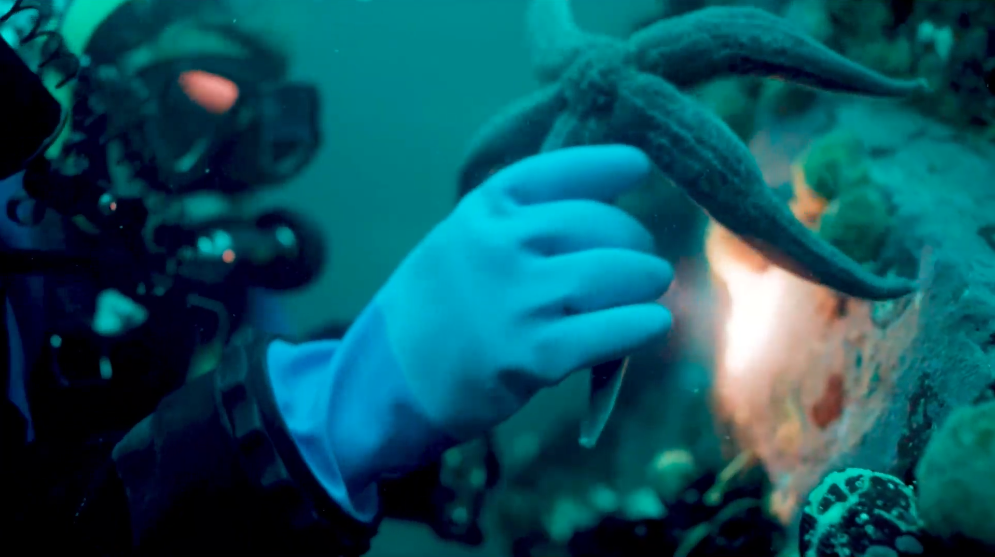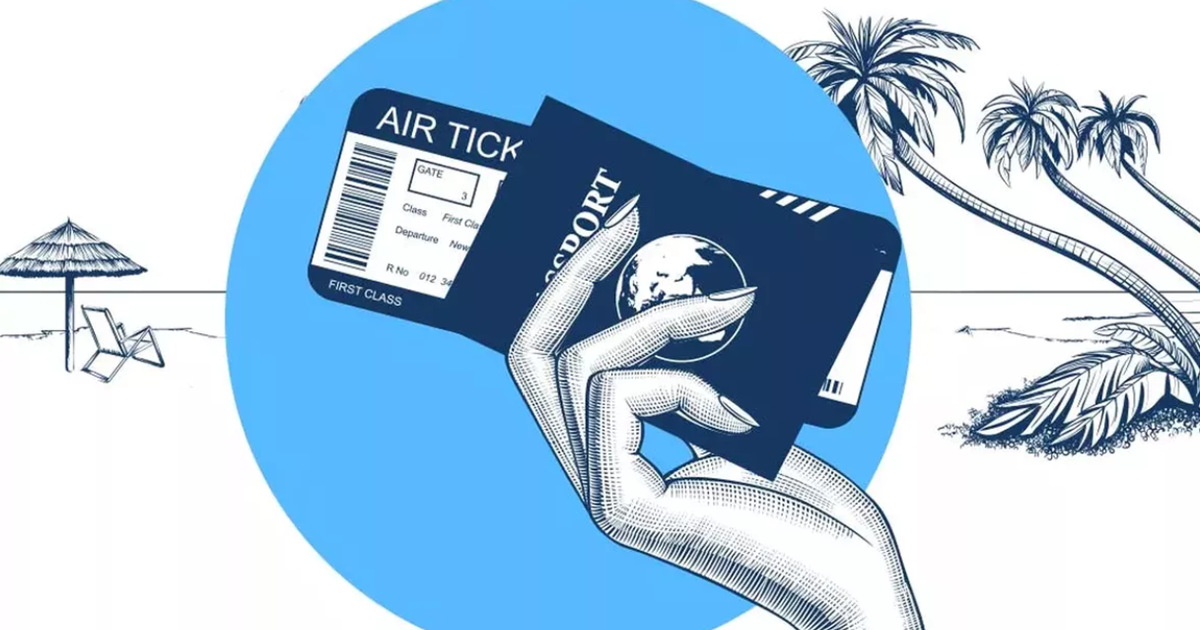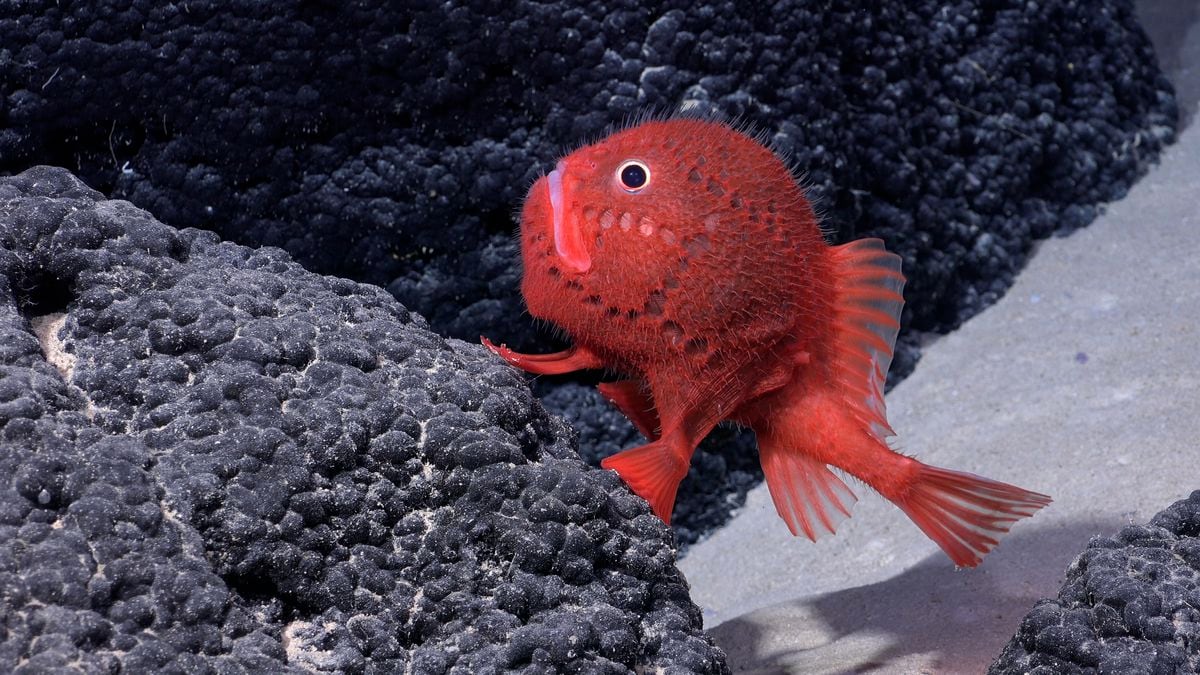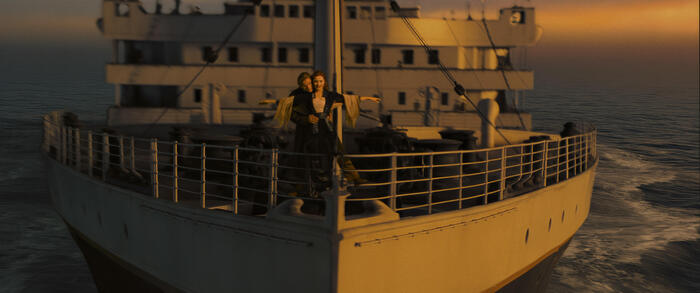Patagonia: a biodiversity paradise on the Chilean coast 2:24
Editor's Note:
Call to Earth is an initiative
of CNN in partnership with
Rolex.
Vreni Häussermann is a Rolex Award laureate.
(CNN) --
On Chile's Pacific fringe lies a biological paradise.
Along the Patagonian coast, surrounded by majestic snow-capped mountains, corals live among some of the deepest fjords in the world.
Here scientists have discovered new species and there are still areas that need to be documented.
But even when the secrets of the reef are revealed, there is trouble in paradise.
called to earth
Chilean-German biologist Vreni Häussermann came to Chilean Patagonia in the late 1990s to explore what she calls "one of the last wastelands on Earth."
https://dynaimage.cdn.cnn.com/cnn/animations/org/200713155727-vreni-haussermann-4.mp4
Häussermann was a student at the University of Munich when an exchange program gave him the opportunity to study for a year in the city of Concepción, in central Chile.
For her thesis, she undertook a six-month journey along the country's coast with her research partner Gunter Forsterra, who is now her husband.
They dived frequently along the way, and Häussermann was intrigued by the possibilities in Patagonia.
“It was the most beautiful and least known region,” she recalls.
advertising
Vreni Häussermann
Isolated fjords were created by Pacific flooding in deep valleys once carved by glaciers, and the region's coastline is some 80,000 kilometers long, twice the circumference of Earth.
It is the work of a lifetime.
Fortunately, she and Forsterra have had a permanent base since 2003 at the Huinay Field Science Station on the Comau Fjord from where they began their studies.
Community unites to conserve Argentine Patagonia 5:25
Together they have discovered more than 100 new species of marine life, including many corals and anemones.
But they say the ecosystem has changed profoundly since they started.
Häussermann says they have witnessed a rapid growth in the number of salmon farms operating in the fjord.
Fish feces and uneaten food pellets from farms act as fertilizer, according to Forsterra, "dramatically changing the nutrient environment in the water."
"Algae blooms happen," Forsterra explains, "you get a depletion of oxygen in the water."
He says this can have a dramatic impact, changing entire food chains.
“We have salmon farming, fishing, shellfish harvesting on the one hand, but also climate change,” says Häussermann.
Landslides from steep slopes covered in temperate rainforest also have an effect, he adds, as does volcanic activity, which causes methane and sulfur emissions from underwater fissures.
“This all overlaps,” explains Häussermann.
"It's really hard to track what is the reason for each change, but we are definitely seeing drastic changes in biodiversity."
"These changes," he adds, "are definitely too rapid to be natural."
https://dynaimage.cdn.cnn.com/cnn/animations/org/200713155929-vreni-haussermann-6.mp4
Chile is the second largest salmon producer in the world, with exports worth an estimated US$5 billion in 2021.
Esteban Ramírez is general manager of salmon research at the Instituto Tecnológico del Salmón - Salmón Chile, an association of producers and suppliers.
He told CNN in a 2020 email that feces and uneaten pellets from salmon farms are a potential source of nutrients in the water, but argues that in most cases the nutrient increase is localized around The farms.
He added that the industry operates within strict environmental regulations and has implemented technologies to mitigate any negative impacts.
He says that any impact on biodiversity is "multifactorial", citing "climate change, pollution and other anthropogenic factors".
“We continuously work on prevention, innovation and research to reduce any environmental impact,” he said.
“There are many species that have not been described”
https://dynaimage.cdn.cnn.com/cnn/animations/org/200713170603-vreni-haussermann-5-3.mp4
The work of Häussermann and Forsterra has turned into taxonomy—the discovery and classification of species—against the clock.
“(Taxonomy is) a general problem in the world,” she says.
"There are many, many more species that have not been described, compared to those that have...and unfortunately there will be many species that will never be described before they go extinct."
“We are trying to really inventory the region to find out what lives here, where it lives, what conditions it needs to live, and how things are changing with climate change,” adds Häussermann.
Beneath the surface of the water there is much to study, and some of the findings could be of global interest.
As carbon dioxide levels in Earth's atmosphere rise, the world's oceans become more acidic.
Shallow-water corals in fjords already live in conditions as acidic as the world's oceans are predicted to be at in 2100. They could offer potential insights into how corals elsewhere may function in the future.
Among the finds in the shallows are two new anemones,
Isoparactis fionae
and
Isoparactis fabiani
, named after Häussermann and Forsterra's children, Fiona and Fabian.
“For me, I think they should represent that the future generation needs to really care and learn to care about the planet,” says Häussermann.
The
Isoparactis fionae
anemone , discovered in Chile and named after Häussermann's daughter, Fiona.
To explore the depths, they use a remotely operated vehicle (ROV) that can descend 500 meters.
His "big dream," says Häussermann, is to use a more advanced ROV to reach the bottom of the 1,300-meter-deep Messier Channel south of Comau, which remains largely unexplored.
"It would be amazing to see what's down there," he adds.
Häussermann and Forsterra provide information to the Government that they say will contribute to the sustainable use and protection of Chilean Patagonia.
Häussermann says the ecosystem is still "so little known," a factor, she believes, why her plight is going unnoticed.
Often when sharing photos of underwater flora with Chileans, Häussermann says they are surprised that biodiversity is just around the corner.
“This is really the tragedy of the ocean: because even if all the life there were wiped out, no one would see it,” she says.
“It is very important to bring these images to people and show them the beauty.
“Only if people understand it, they will like it.
And only if they like it will they be interested in keeping it.”









/cloudfront-eu-central-1.images.arcpublishing.com/prisa/T6DQ47B5NBGT7KYRSXVDFRJVKE.jpg)